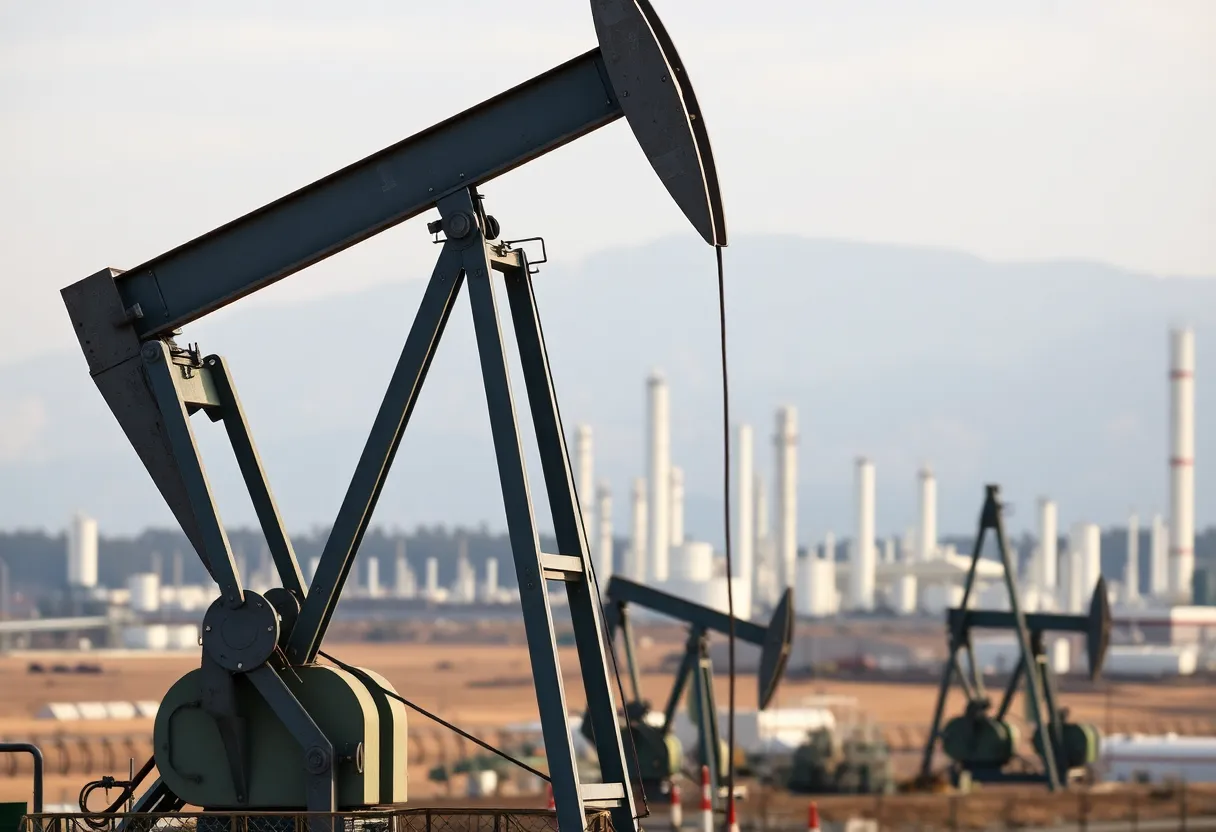California, September 24, 2025
News Summary
California is implementing new legislation to tackle the state’s increasing gas prices and declining refining capacity. Governor Gavin Newsom has approved measures to fast-track approvals for 2,000 new oil wells annually in Kern County over the next decade. With gasoline prices averaging $4.65 per gallon and refinery closures reducing operational facilities, the state is looking to stabilize fuel supply and lessen reliance on foreign oil sources while navigating environmental concerns and transitioning towards greener energy solutions.
California is taking significant steps to address rising gas prices and declining refining capacity. Governor Gavin Newsom has signed new legislation designed to fast-track the approval of 2,000 new oil wells per year in Kern County over the next decade, allowing for a more stable oil supply amid ongoing refinery closures.
Residents of California currently face higher-than-average gasoline prices, paying an average of $4.65 per gallon for regular gasoline, compared to the national average of $3.17. With the planned closures of Valero and Phillips 66 facilities, the number of operational refineries in the state is expected to decrease from 13 to 11. This reduction is part of a long trend, as California’s refining capacity has significantly declined from 40 refineries in 1983.
The legislation aims to ensure a stable gasoline supply and prevent severe price increases at the pump. As California has become increasingly reliant on foreign sources for three-quarters of its oil, the newly signed law seeks to diversify the state’s fuel supply, stabilize petroleum markets, and balance fossil fuel production with the transition towards greener energy solutions amidst climate challenges. The move comes on the heels of a more comprehensive package of bills aimed at transitioning California to green energy while maintaining energy affordability.
As part of these changes, a notable bill is easing regulations on oil production in Kern County. Officials describe this approach as “targeted and environmentally responsible,” focusing on boosting the fuel supply while addressing environmental concerns. Furthermore, California’s cap-and-trade program has been extended to 2045, with an emphasis on reinvesting funds into climate-friendly projects.
Alongside these legislative efforts, Newsom’s administration has sought to update California’s Wildfire Fund. This update includes additional funding for utilities to cover wildfire liabilities, addressing public safety concerns. However, the recent developments have sparked criticism from advocacy groups who argue that they may jeopardize California’s climate goals and disproportionately impact communities situated near refineries.
Consumer advocacy organizations such as Consumer Watchdog have expressed concern, claiming that these legislative measures might not adequately address underlying problems and could instead lead to higher costs for consumers. Significantly, the California Energy Commission has delayed proposed penalties aimed at addressing excessive profits in the oil industry, marking a notable shift in regulatory policies.
This new legislation contrasts with Governor Newsom’s earlier initiatives, including an ambitious proposal to ban new gas-powered vehicles by 2035, which faced resistance at the federal level. As California continues to wrestle with its increasing refining capacity challenges, it is searching for viable paths to transition away from fossil fuels while ensuring that consumers are not burdened by rising costs.
Industry leaders have expressed cautious optimism that the recent policy changes can lead to a more collaborative relationship between the state government and oil companies. This collaborative approach could forge a more sustainable energy future for California, balancing economic and environmental needs.
FAQ
What has California’s legislation aimed to achieve regarding oil supply?
The legislation aims to stabilize the state’s gasoline supply and prevent severe price spikes at the pump.
How many new oil wells are slated for approval in California?
The legislation fast-tracks the approval of 2,000 new oil wells per year over the next decade in Kern County.
What are the current average gasoline prices in California compared to the national average?
California residents currently pay an average of $4.65 for a gallon of regular gasoline, significantly higher than the national average of $3.17.
How has California’s refining capacity changed over the years?
California’s number of operational refineries is set to decrease from 13 to 11, down from 40 refineries in 1983, highlighting a significant reduction in local refining capacity over the years.
Key Features of California’s Legislation on Oil Supply
| Feature | Details |
|---|---|
| New Oil Wells | Fast-track approval of 2,000 new oil wells per year in Kern County for the next decade. |
| Gas Prices | California’s average gas price at $4.65; national average is $3.17. |
| Refinery Closures | Number of operational refineries reduced from 13 to 11 due to closures. |
| Legislation Goals | Aim to stabilize gasoline supply and prevent price spikes at the pump. |
| Reliance on Foreign Oil | California is now reliant on foreign sources for three-quarters of its oil. |
Deeper Dive: News & Info About This Topic
- CBS News: Newsom’s California Climate and Energy Affordability Package
- Politico Pro: Newsom Signs Sweeping Energy Affordability Package
- Los Angeles Times: Skelton on Newsom and Oil Policy
- ABC7 News: California Energy Regulators Pause Efforts to Penalize Oil Companies
- Los Angeles Times: California Gasoline Costs and Industry Impacts
- Wikipedia: California
- Google Search: California Oil Legislation
- Google Scholar: California Energy Policy
- Encyclopedia Britannica: California Energy Affordability
- Google News: California Oil News

Author: STAFF HERE HOLLYWOOD
The Hollywood Staff Writer represents the experienced team at HEREHollywood.com, your go-to source for actionable local news and information in Hollywood, Los Angeles County, and beyond. Specializing in "news you can use," we cover essential topics like product reviews for personal and business needs, local business directories, politics, real estate trends, neighborhood insights, and state news affecting the area—with deep expertise drawn from years of dedicated reporting and strong community input, including local press releases and business updates. We deliver top reporting on high-value events such as the Hollywood Bowl summer concerts, the Hollywood Christmas Parade, film premieres at TCL Chinese Theatre, and festivals at the Magic Castle. Our coverage extends to key organizations like the Hollywood Chamber of Commerce and Visit Hollywood, plus leading businesses in entertainment, dining, and tourism that define the local economy. As part of the broader HERE network, including HERELosAngeles.com, HEREBeverlyHills.com, HEREAnaheim.com, and HEREHuntingtonBeach.com, we provide comprehensive, credible insights into Southern California's dynamic landscape.





